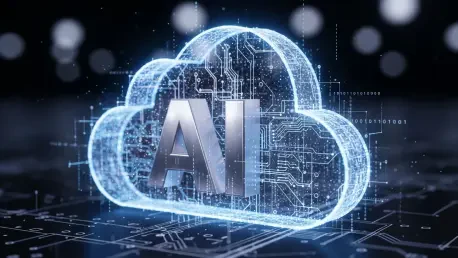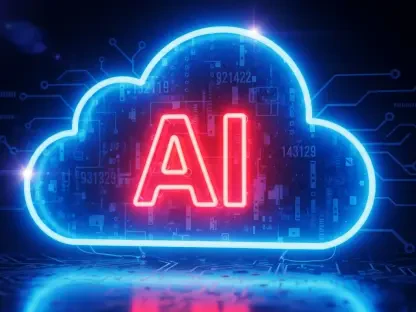The Current State of Cloud Computing: A Critical Overview
As the backbone of enterprise technology in 2025, cloud computing stands at the forefront of global digital transformation, powering everything from remote work environments to complex data analytics. With businesses increasingly reliant on scalable infrastructure, the cloud industry supports a vast ecosystem of applications critical to operational efficiency and innovation. This pervasive adoption underscores the sector’s role as a linchpin in modern tech, driving agility and enabling companies to respond swiftly to market demands.
Dominating this landscape are major hyperscalers like AWS and Azure, which command significant market share through robust service offerings and expansive global networks. However, emerging challengers are gaining traction, fueled by niche solutions and competitive pricing models. Alongside these players, the integration of AI-driven infrastructure has become a defining trend, with generative AI pushing the boundaries of what cloud platforms can achieve, reshaping enterprise expectations.
A notable technological shift is the pivot toward GPU-centric data centers, designed to handle the intensive workloads of AI applications. This transition, while innovative, marks a departure from traditional architectures, as hyperscalers prioritize resources for cutting-edge demands over legacy systems. The growing influence of generative AI as a market driver further amplifies this focus, positioning cloud providers at the intersection of computational power and strategic transformation.
Key Trends and Predictions Shaping Cloud Tech by 2026
Emerging Dynamics in AI and Cloud Infrastructure
The race to build AI-native infrastructure is intensifying among hyperscalers, who are investing heavily in systems optimized for machine learning and deep learning tasks. Simultaneously, enterprises are scrambling to formulate effective AI strategies that align with their operational goals, creating a dual dynamic of innovation and adaptation. This convergence promises to redefine how cloud services support next-generation technologies over the coming year.
However, this rapid shift toward GPU environments carries significant operational risks, particularly as legacy systems are deprioritized in favor of AI-centric investments. Predictions suggest that at least two major multiday outages will strike leading hyperscalers by 2026, driven by the strain of managing complex, hybridized infrastructures. Such disruptions could expose vulnerabilities in the rush to modernize, prompting a reevaluation of resource allocation.
Compounding these challenges is the enterprise push for greater autonomy, with an estimated 15% of businesses expected to adopt private AI solutions on private clouds by 2026. This trend stems from concerns over escalating AI costs, data lock-in risks, and the inherent vulnerabilities of public cloud systems. By moving toward self-managed environments, companies aim to secure control over critical data and mitigate exposure to external failures.
Market Growth and Competitive Shifts
Specialized GPU-first providers, often termed neoclouds, are poised to disrupt the traditional cloud market, with names like CoreWeave and Lambda projected to capture $20 billion in revenue by 2026. These agile competitors cater specifically to AI infrastructure needs, offering high-performance solutions that appeal to enterprises seeking tailored scalability. Their rise signals a shift away from the one-size-fits-all model of established hyperscalers.
Enterprise adoption of neocloud deployments is forecasted to triple by next year, accompanied by significant regional expansions in Europe and Asia. These providers are also integrating deeply into enterprise AI stacks, leveraging open-source models and orchestration tools to enhance flexibility. Such growth challenges the dominance of legacy players, forcing a rethinking of competitive strategies across the sector.
Looking ahead, the ascent of neoclouds is likely to fragment the market, creating space for specialized solutions that prioritize speed and customization over broad-spectrum services. This evolution could redefine market dynamics, as traditional hyperscalers grapple with balancing innovation against the agility of newer entrants. The resulting landscape may favor partnerships and hybrid models to meet diverse enterprise demands.
Challenges in Cloud Infrastructure: Fragility and Trust
The focus on AI-centric investments by hyperscalers risks neglecting aging legacy systems, heightening the potential for infrastructure fragility. As resources shift to cutting-edge GPU environments, older architectures may struggle under increased complexity, leading to predicted outages by 2026. These disruptions could erode customer trust, particularly among enterprises reliant on consistent uptime for critical operations.
Enterprise concerns are further compounded by issues of data sovereignty and the rising costs associated with AI integration in public clouds. Restrictive vendor policies, such as limitations on API access seen in certain platforms, exacerbate frustrations by hindering interoperability and data utilization. This environment of uncertainty pushes businesses to question the reliability of long-term public cloud commitments.
To address these risks, strategies such as comprehensive infrastructure renovations and diversified cloud reliance are gaining attention. Hyperscalers may need to prioritize modernization of legacy systems alongside AI advancements to prevent cascading failures. Meanwhile, enterprises could benefit from hybrid approaches, balancing public and private cloud resources to safeguard against single points of failure and rebuild confidence in the ecosystem.
Regulatory and Security Considerations in Cloud Adoption
The regulatory landscape for cloud computing is evolving rapidly, with data privacy and sovereignty laws shaping strategic decisions for both public and private cloud adoption. Governments worldwide are imposing stricter guidelines to protect sensitive information, influencing how enterprises structure their data management practices. These mandates often require localized storage and processing, complicating global cloud deployments.
Compliance with such regulations is driving a notable shift toward private AI deployments, as enterprises seek greater control over corporate data to meet legal standards. This move reflects a broader prioritization of governance over convenience, particularly in industries handling sensitive customer information. By maintaining private environments, businesses can better navigate the intricate web of international data protection requirements.
Security challenges tied to potential outages also loom large, underscoring the need for robust protective measures against operational disruptions. As cloud systems become more integral to enterprise functions, the impact of downtime grows exponentially, exposing vulnerabilities to cyber threats during recovery periods. Strengthening resilience through advanced security protocols and contingency planning remains a critical focus for sustaining trust and stability.
The Future of Cloud Tech: Innovation Amid Instability
AI integration is set to remain a primary driver of cloud evolution, pushing the boundaries of infrastructure capabilities while introducing new layers of complexity. The promise of enhanced automation and predictive analytics fuels optimism for transformative outcomes in enterprise efficiency. Yet, this progress must be balanced against the instability posed by infrastructure vulnerabilities that could undermine reliability.
Neoclouds represent a disruptive force in this equation, as their specialized, agile offerings gain traction in the AI infrastructure market. By focusing on high-performance environments tailored to specific workloads, these providers are carving out a significant niche, challenging the broader service models of traditional hyperscalers. Their ability to innovate quickly may set a new standard for responsiveness in the sector.
Broader influences, such as global economic conditions and consumer demand for resilience, will also shape the trajectory of cloud technology. Enterprises are increasingly seeking cost-effective, flexible solutions that can adapt to fluctuating market pressures. This push for affordability and durability could accelerate the adoption of hybrid and multi-cloud strategies, fostering a more diversified and resilient technological landscape by 2026.
Conclusion: Navigating a Transformative Era for Cloud Computing
Reflecting on the insights gathered, it becomes evident that cloud outages, the shift to private AI, and the rise of neoclouds have emerged as defining forces for the industry by 2026. These elements highlight a period of significant transition, where the promise of AI-driven innovation collides with the realities of infrastructure limitations and competitive upheaval. The analysis paints a picture of a sector grappling with both opportunity and risk in equal measure.
Enterprises and hyperscalers alike are urged to invest in resilience by modernizing legacy systems and adopting diversified cloud strategies to mitigate future disruptions. Embracing specialized providers like neoclouds offers a pathway to leverage cutting-edge AI infrastructure while maintaining flexibility. Prioritizing innovation through strategic partnerships and adaptive planning stands out as an essential step to navigate the evolving landscape.
Looking beyond immediate challenges, the focus shifts to building a foundation for long-term stability, with an emphasis on balancing technological advancement with operational security. Stakeholders are encouraged to explore hybrid models that integrate public, private, and neocloud solutions to address diverse needs. This proactive approach promises to position the industry for sustained growth in an era defined by rapid change and relentless ambition.









